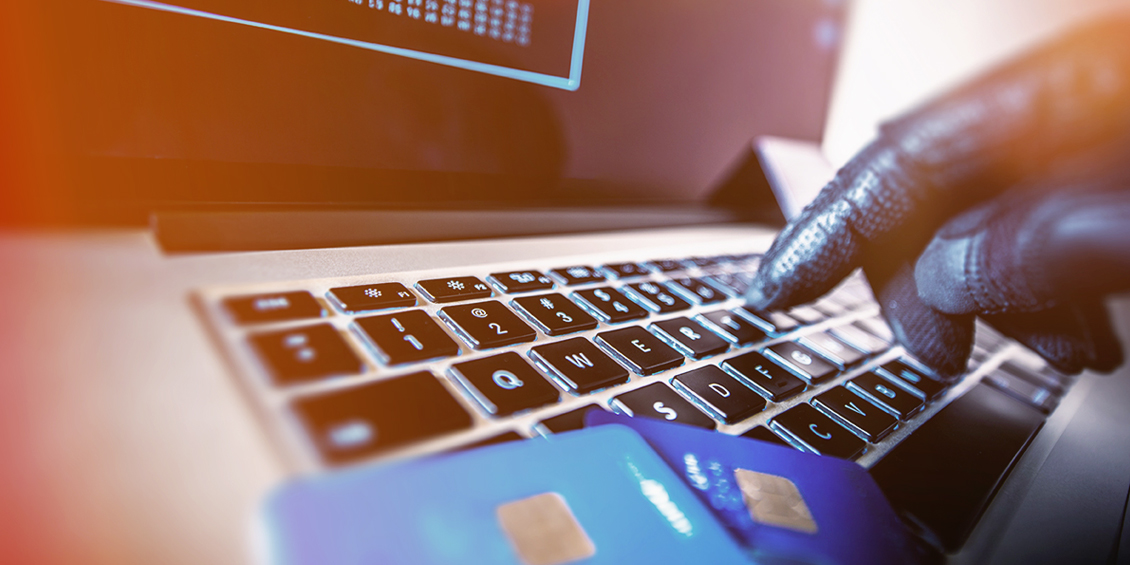
I fight fraud for a living. So, trust me when I say, there is no way to be absolutely, 100% secure from fraud. It simply can’t happen. Even if we were somehow able to eliminate 99.99% of the fraudsters on the planet, there would still be a few of them out there we didn’t catch … and it only takes one.
Having said that, your chances of being a victim would certainly drop under those circumstances. Ultimately, that’s our best bet: to lower the odds of it happening to us. We can’t really eliminate fraudsters—not to any measurable degree. But we can improve our position.
We can’t guarantee you won’t become a victim of fraud, of course, any more than installing a home security system will guarantee you won’t get robbed. But, imagine we have two houses standing next to one another. Both apparently have the same amount of bounty inside…but one has decals and yard signs that announce there is an alarm system. Which one do you think the thief is more likely to break into?
By the same token, you can’t completely prevent fraud, but you CAN make yourself less of a target. Common sense dictates that we do everything in our power to make fraudsters pass us by in search of an easier target. But is that what we do?
No. No it isn’t. In fact, in our carelessness, we practically invite fraudsters’ attention
Giving Away Your Information: A Case Study
Let me give you an example that perfectly demonstrates what I’m talking about. I was standing in the checkout line of a local discount store this weekend, surrounded by shoppers who appeared to be much like me: hot, tired, and ready to go home. The line was moving slowly, so I was understandably frustrated when the lady in front of me told the clerk that no, she did not have a loyalty card, and that yes, she would like to apply for one.
The clerk asked for a name, email address, and phone number, which the woman supplied, out loud. Anyone around could’ve heard her; worse, all were so shockingly simple and memorable that I could repeat them to you, even now. The clerk explained that the customer would get an email prompting her to choose a password. The woman said—again, out loud—that she always used the same password: her last name spelled backwards.
Do you see what’s happening here? I am not a fraudster—I’m not actively searching for any of this information—but I already have her name, phone number, email address and the password she claims to use for everything!
That small cache of information could’ve been used to create an entirely new online persona. It likely wouldn’t be enough to qualify for a traditional credit card. It might be enough to get a store card, though, which could be leveraged into increasing lines of credit.
Multiple Points of Vulnerability
Fraudsters can spend years nurturing accounts in a customer’s name, making minor purchases, then paying quickly and in-full. A full credit history can be built without the customer even knowing.
Once the credit limits on the cards are high enough to be profitable, the fraudster maxes out all the various lines of credit and disappears. The thief leaves thousands of dollars in debt, all of which tie back to the customer’s social security number.
Fraudsters have numerous ways of attempting this, some more effective and efficient than others. But why are we making it easier for them? Why, instead of protecting our information, are we basically handing it to them on the proverbial silver platter? This is an extreme example, I realize, but we still do it in varying degrees all the time.
How many of your accounts use the same password? Is it a difficult password to guess? When was the last time you changed it? For the average person, the answers to those questions would be “Nearly all of them,” “Yes,” and “Never,” respectively. We all know we should pay more attention, but the hassle doesn’t seem worth it…until you become a victim.
Here’s one you may not have thought of: what about IoT-connected devices? Doorbells, thermostats, security cameras, appliances, and more can now be connected to the web. Of course, that also means fraudsters have more entry points to access your data. A strong password on your internet router might be pointless if a criminal can hack in through your refrigerator.
Having strong passwords and being protective about checking and sharing data are two of the easiest ways that people—and businesses—can stymie fraudsters. Yet we end up going the other direction, actually making fraud easier by using generic passwords, thoughtlessly handing out our personal information, and just assuming that our credit information is safe. As a fraud fighter, I find this frustrating.
I understand convenience is a powerful draw for people. But, on the other hand, you should understand that convenience usually comes at a price. And in the case of stolen identity, that price can be especially steep.
